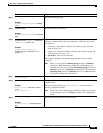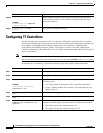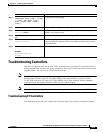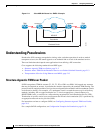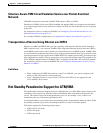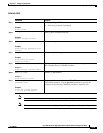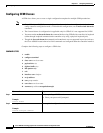
21-2
Cisco ASR 901 Series Aggregation Services Router Software Configuration Guide
OL-23826-09
Chapter 21 Configuring Pseudowire
Understanding Pseudowires
Figure 21-1 Cisco ASR 901 Router in a PWE3—Example
Understanding Pseudowires
Pseudowires (PWs) manage encapsulation, timing, order, and other operations in order to make it
transparent to users; the PW tunnel appears as an unshared link or circuit of the emulated service.
There are limitations that impede some applications from utilizing a PW connection.
Cisco supports the following standards-based PWE types:
• Structure-Agnostic TDM over Packet, page 21-2
• Structure-Aware TDM Circuit Emulation Service over Packet-Switched Network, page 21-3
• Transportation of Service Using Ethernet over MPLS, page 21-3
Structure-Agnostic TDM over Packet
SAToP encapsulates TDM bit-streams (T1, E1, T3, E3) as PWs over PSNs. It disregards any structure
that may be imposed on streams, in particular the structure imposed by the standard TDM framing. The
protocol used for emulation of these services does not depend on the method in which attachment circuits
are delivered to the PEs. For example, a T1 attachment circuit is treated the same way for all delivery
methods, including: PE on copper, multiplex in a T3 circuit, mapped into a virtual tributary of a
SONET/SDH circuit, or carried over a network using unstructured Circuit Emulation Service (CES).
Termination of specific carrier layers used between the PE and circuit emulation (CE) is performed by
an appropriate network service provider (NSP).
For instructions on how to configure SAToP, see Configuring Structure-Agnostic TDM over Packet,
page 21-9.
For a sample SAToP configuration, see Configuration Examples for Pseudowire, page 21-31.
TDM TDMxconnectxconnect
MPLS/IP
Pseudowire
Emulated Circuit
284293




